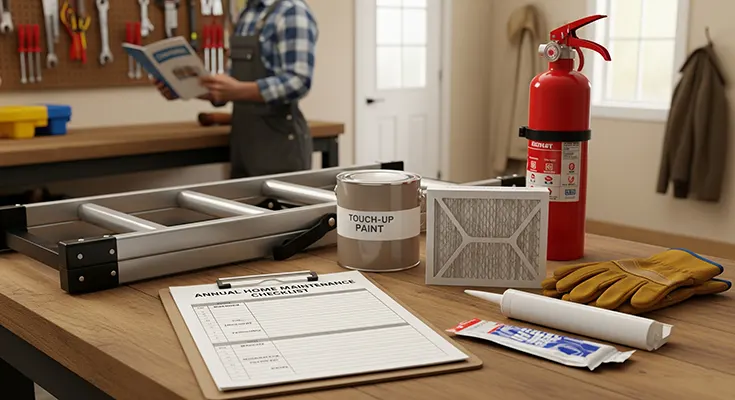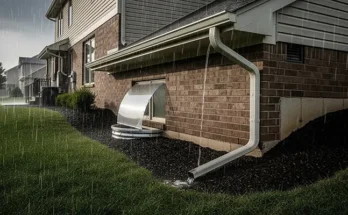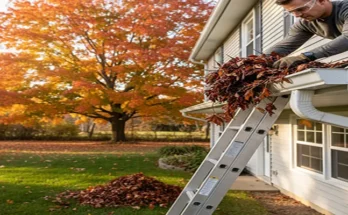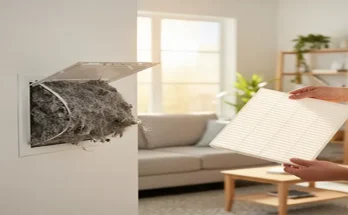Congratulations on becoming a first-time homeowner! You’ve secured your biggest investment, and now the real work—and reward—of ownership begins. Unlike renting, keeping your home in top shape falls entirely on you. Deferred maintenance is the single biggest threat to your property’s value and can lead to costly emergency repairs.
To help you protect your investment and maintain a safe, comfortable home, here is your essential annual home maintenance checklist, broken down into seasonal, actionable tasks.
1. Spring: The Post-Winter Thaw & Exterior Check
Spring is the time to recover from the harshness of winter and focus on your home’s envelope (roof, gutters, siding, and foundation).
| Task Category | Action Item | Why It’s Essential |
| Roof & Gutters | Clean Gutters and Downspouts. Clear all leaves and debris. Check for leaks and ensure downspouts direct water at least 5-10 feet away from the foundation. | Prevents water from pooling, which can cause roof, siding, and foundation damage. |
| Roof Inspection | Inspect the Roof. From the ground or a secure ladder, check for missing, cracked, or damaged shingles. Look for excessive shingle granules in the gutters. | Catching a small issue now prevents a major leak later. |
| HVAC (Cooling) | Schedule AC System Service. Have a professional inspect and tune up your air conditioning unit before the cooling season begins. | Ensures efficient operation and prevents mid-summer breakdowns. |
| Exterior & Foundation | Inspect Foundation and Siding. Look for cracks, signs of water pooling, or loose/damaged siding or trim. | Cracks can signal shifting or allow pests and water to enter. |
| Yard & Deck | Inspect Deck, Patio, and Driveway. Look for loose nails, rotting wood, or cracks in concrete. Trim all shrubs/trees away from the house (at least 1 foot). | Prevents pest entry, wood rot, and physical hazards. |
| Safety | Test the Sump Pump. Pour a bucket of water into the pit to ensure it turns on, removes the water, and shuts off properly. | Critical for preventing basement flooding during heavy rain. |
2. Summer: The Deep Dive & Outdoor Focus
With good weather on your side, summer is the perfect time for exterior painting, sealing, and attending to deferred tasks.
| Task Category | Action Item | Why It’s Essential |
| Pest Control | Check for Termites and Pests. Inspect crawl spaces, basements, and exterior wood for signs of infestation. Seal any gaps or holes where pests can enter. | Protects the structural integrity of your home. |
| Water Heater | Flush the Water Heater. Drain a few gallons of water from the tank to remove sediment buildup. (Consult your manual first, or hire a pro). | Improves efficiency and significantly extends the water heater’s lifespan. |
| Appliance Care | Clean Refrigerator Coils. Unplug the fridge and gently vacuum the coils, usually located underneath or in the back. | Improves energy efficiency and prevents overheating. |
| Exterior Paint/Seal | Inspect and Touch Up Exterior Paint/Caulk. Look for peeling paint or cracking caulk around windows, doors, and vents. | Exterior coatings protect the wood and siding from moisture damage. |
| Garage Door | Lubricate Moving Parts. Oil the springs, rollers, and hinges of your garage door. | Ensures smooth operation and prolongs the life of the opener motor. |
3. Fall: Winterizing & Safety Preparations
As the weather cools, your focus shifts to preparing the home’s systems for cold temperatures and ensuring interior safety is prioritized.
| Task Category | Action Item | Why It’s Essential |
| HVAC (Heating) | Schedule Furnace/Heating System Service. Have a professional clean and tune up your system before the cold season. | Prevents dangerous carbon monoxide leaks and ensures efficient heating. |
| Roof & Chimney | Clean Gutters (Again). Remove leaves before the first freeze. Inspect Fireplace/Chimney. If you use it, schedule a professional cleaning and inspection to remove creosote. | Clogged gutters in winter can cause ice dams and roof damage. Creosote is a fire hazard. |
| Plumbing | Winterize Exterior Faucets. Shut off the water supply to all exterior spigots and drain the lines. Store all garden hoses. | Prevents water in the pipes from freezing and bursting the pipes. |
| Safety | Test Smoke & CO Detectors. Replace batteries (if not 10-year sealed units) and test all detectors. Check Fire Extinguishers. Ensure they are accessible, charged, and not expired. | Vital for family safety—this should be a biannual or quarterly task. |
| Doors & Windows | Check Weather Stripping and Caulking. Apply new weather stripping around doors and caulk around windows to seal air leaks. | Keeps heat in, lowers energy bills, and prevents drafts. |
4. Winter: Interior Focus & Utility Management
With most outdoor tasks paused, concentrate on indoor maintenance, energy efficiency, and monitoring.
| Task Category | Action Item | Why It’s Essential |
| HVAC Filters | Change or Clean HVAC Filters. Change standard filters monthly or quarterly, depending on the type. Keep spare filters on hand. | Crucial for efficiency, air quality, and the longevity of your heating system. |
| Laundry/Fire Safety | Clean the Dryer Vent. Disconnect the dryer and vacuum out the entire exhaust ductwork from the back of the machine to the exterior vent cap. | Lint buildup is a major fire hazard and reduces dryer efficiency. |
| Plumbing | Inspect for Leaks. Check under all sinks, around the toilet bases, and near the water heater for small drips or moisture. | Small leaks waste water and can cause mold and costly structural damage if left untreated. |
| Ventilation | Clean Bathroom Exhaust Fans. Remove and clean the fan covers/grills to ensure proper moisture ventilation. | Proper venting prevents humidity buildup that leads to mold and mildew. |
| General Check | Walk the House. Check the attic for frost or leaks, and the basement for signs of moisture. Monitor all pipes that run through unheated spaces. | Early detection of water issues saves thousands in repairs. |
The Golden Rule: Budget and Document
As a first-time homeowner, two of the best habits you can adopt are:
- Budget for Maintenance: Experts recommend saving 1-4% of your home’s value annually for maintenance and eventual repairs. For a $300,000 home, that’s $3,000–$12,000 per year.
- Keep Records: Create a digital or physical binder to track every maintenance task, professional service, and repair receipt. Good documentation is invaluable for future financing, warranty claims, and when you eventually sell your home.
Consistency is key. By tackling these essential annual tasks, you are not just cleaning—you are proactively protecting your investment, ensuring your family’s safety, and making homeownership a rewarding, less stressful experience.





